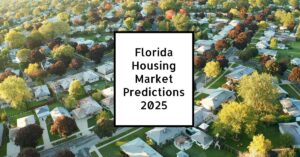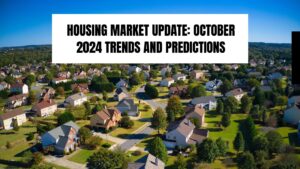Key Takeaways:
- Jerome Powell emphasizes that the Federal Reserve cannot single-handedly resolve the ongoing issues in the housing market.
- Rising home prices, dwindling housing supply, and shifting market trends have contributed to a complex situation.
- The need for collaboration between government policies and market strategies is essential to address the broken housing market effectively.
Jerome Powell Acknowledges the Fed's Limits in Addressing the Housing Market Issues
In a recent address, Federal Reserve Chair Jerome Powell stated that the Fed alone can’t fix the broken housing market. This acknowledgment reflects a deeper understanding of the multifaceted problems facing potential homebuyers and sellers today. Various interconnected components such as increasing home prices, limited housing supply, and changing market trends contribute to making the housing landscape challenging for many.
Powell noted that the housing supply problem isn’t one that the Fed can address. “All of the aspects of housing are far more difficult, and where are we going to get the supply?” he said, “And this is not something the Fed can really fix.”
Still, he noted, lowering interest rates could help somewhat. “As we normalize rates, I think you’ll see the housing market normalize,” he said. “Ultimately, by getting inflation broadly down and rates normalized and getting the housing cycle normalized, that is the best thing we can do for householders. And the supply question will have to be dealt with by the market, and also by the government.”
Home Sales: A Slowdown Amid Challenges
Home sales have experienced a noticeable slowdown in many regions across the United States. According to recent data from Zillow, the average home value has increased to $361,282, reflecting a modest rise of 2.9% over the past year. However, prospective buyers are finding it tough to enter the market. High mortgage rates and uncertain economic conditions are causing many to hesitate.
In 2024, experts predict that the home sales figures may see slight improvements as mortgage rates stabilize, but overall sales levels will likely remain low compared to the booming market of previous years. A report from Realtor.com (April 2024) highlighted that the most substantial growth in home sales is occurring in properties priced between $200,000 and $350,000. Unfortunately, this is also the price range where inventory is dwindling.
Home Prices: The Steady Climb
As home prices continue to rise, affordability issues become a growing concern. The average price increase often deters first-time buyers, who find themselves priced out of the market. The July report from Realtor.com shows that despite rising prices, many sellers are reluctant to list their homes, leading to further competition among buyers.
From January to July 2024, home pricing trends indicate that while the housing market has stabilized, fluctuations are expected. Many homeowners are opting not to sell, which contributes to the stagnation in sales despite an increasing number of buyers. This scenario reflects a segmentation within the market, where affordable housing options remain scarce, pushing prices higher for existing homes.
Housing Supply: Meeting the Demand
In recent years, housing supply has failed to keep pace with increasing demand, leading to severe shortages across many regions. According to Realtor.com, research indicates a significant gap of approximately 7.2 million homes in the U.S. This disparity has left many potential buyers without options, prompting frustration and further complicating the housing landscape.
The good news, however, is that new construction has shown signs of recovery, particularly in the multi-family housing sector. This uptick could help address the supply-demand imbalance in the coming years. Moreover, the rental market is beginning to stabilize as more multi-family units come online, suggesting an evolution in housing availability and affordability.
Market Trends: A Look Ahead
Market trends play a crucial role in shaping the housing dynamics. The Federal Reserve’s recent actions to stabilize inflation have had a ripple effect on market conditions. Mortgage rates have stabilized, which might promote some buyer activity, although many remain cautious due to how high rates once were.
A comprehensive analysis from Zillow conveys that home values are projected to increase slightly, with a forecasted rise of 0.4% by the end of 2024 before experiencing a minor decline—a potential precursor to shifts in buyer sentiment.
Final Thoughts
Addressing the issues in the housing market requires more than monetary policy changes. Jerome Powell's remarks underscore the reality that the Fed alone can’t fix the broken housing market. It necessitates a collaborative approach, coordinating efforts between industry stakeholders, government policies, and the financial sector. As we look forward to 2025, it is vital for buyers, sellers, and policymakers alike to navigate the complexities of this landscape to find common ground that supports a healthier housing market.
Also Read:
- Housing Market Predictions for Next Year: Prices to Rise by 4.4%
- Housing Market Predictions for the Next 4 Years: 2024 to 2028
- Real Estate Forecast Next 5 Years: Top 5 Predictions for Future
- Is the Housing Market on the Brink in 2024: Crash or Boom?
- 2008 Forecaster Warns: Housing Market 2024 Needs This to Survive
- Housing Market Predictions for the Next 2 Years
- Real Estate Forecast Next 10 Years: Will Prices Skyrocket?
- Housing Market Predictions for Next 5 Years (2024-2028)
- Housing Market Predictions 2024: Will Real Estate Crash?
- Housing Market Predictions: 8 of Next 10 Years Poised for Gains
- Trump vs Harris: Which Candidate Holds the Key to the Housing Market (Prediction)











